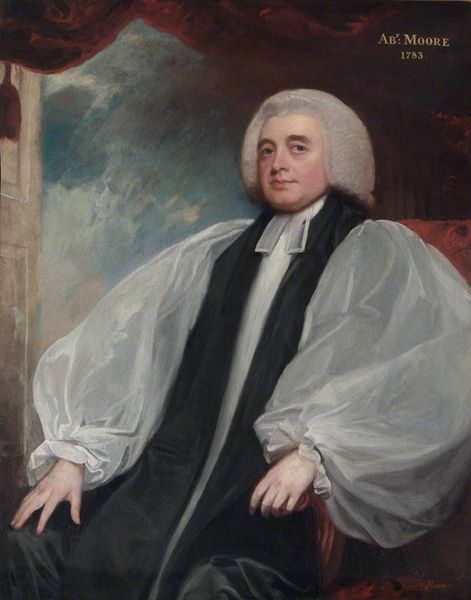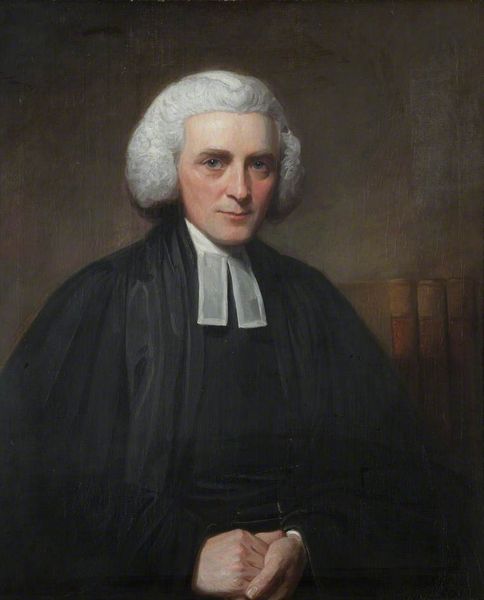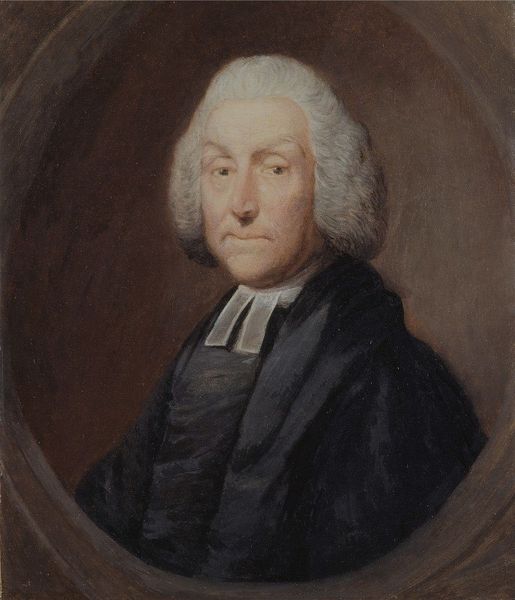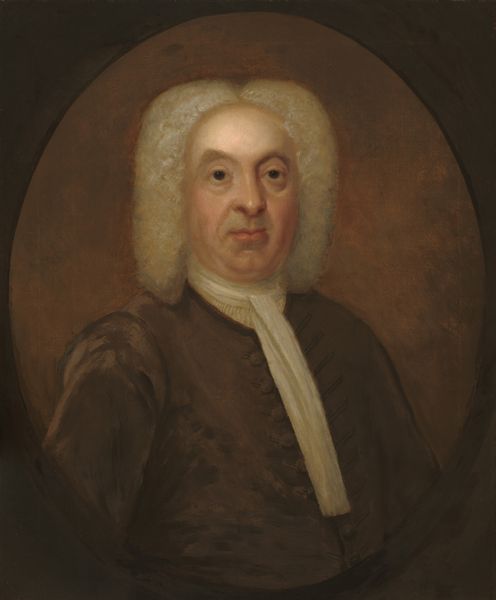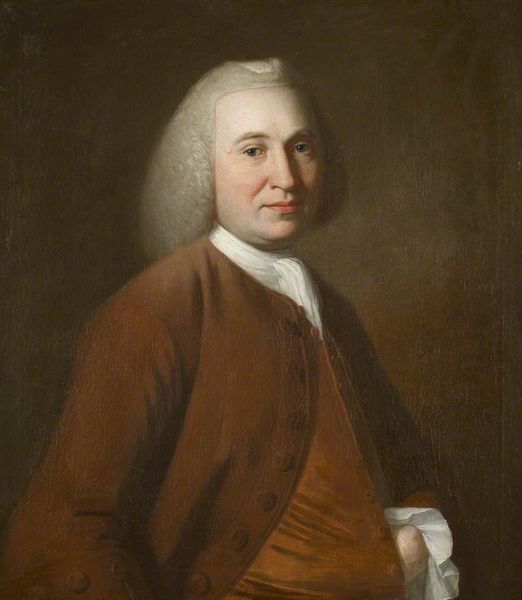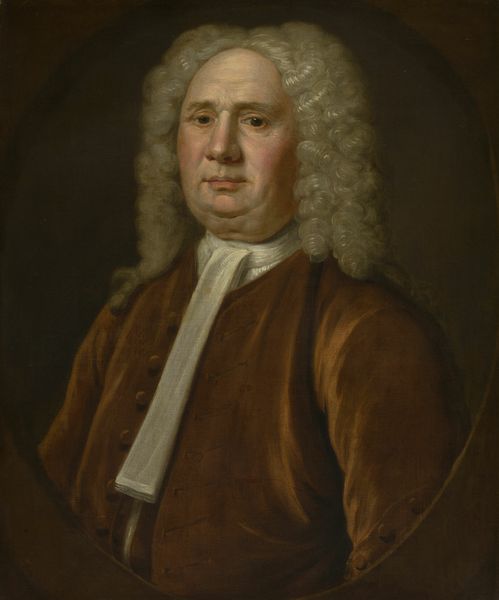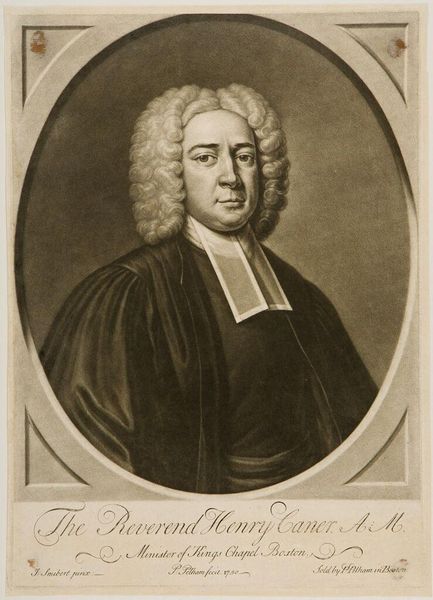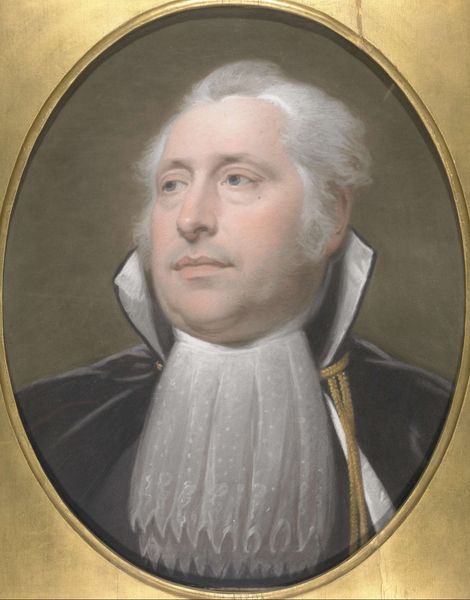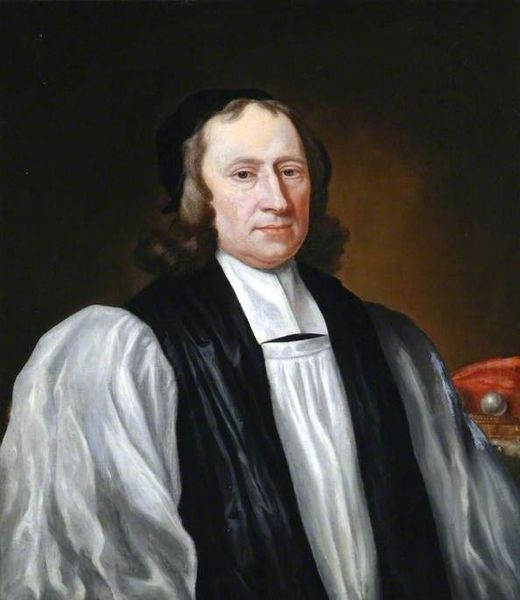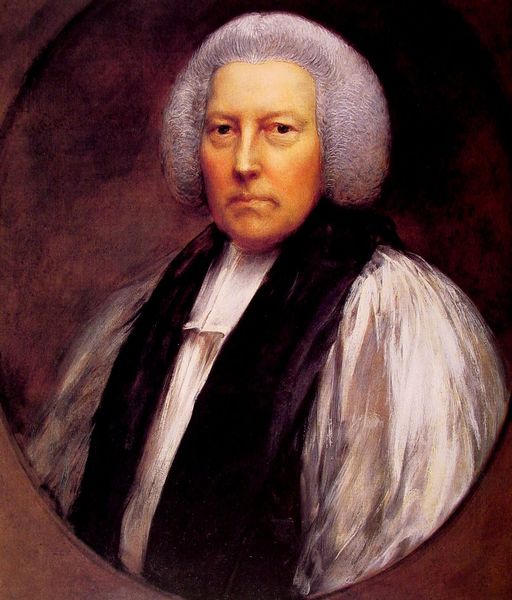
painting
#
portrait
#
baroque
#
portrait
#
painting
#
academic-art
Copyright: Public domain
Curator: This is a portrait of John Ross, the Bishop of Exeter, painted by Lemuel Francis Abbott. Editor: My initial reaction is one of slight…severity? The high contrast and dark background really amplify the Bishop’s solemn expression and that powdered wig adds to the formality. Curator: Indeed. Portraits like these were often commissioned by institutions or wealthy families, and they served as visual affirmations of status and power. Ross was an influential figure in the Church of England, and this image likely reflects his perceived role within that hierarchy. Editor: Absolutely, it’s hard to separate the individual from the institution here. That heavy black vestment seems to blend into the background, creating an imposing, almost impenetrable visual presence. I’m curious how much control Ross had over the portrayal. Was it purely celebratory, or was it also about control and enforcing an image of authority? Curator: That’s a very important point. Artists at this time had a formula, particularly with prestigious sitters such as bishops. But they could exercise degrees of skill in portraying the subjects. The use of light and shadow creates depth and complexity. It's difficult to assess the circumstances of production. Ross’s patronage reflects the visual rhetoric the Church had at its disposal at the time. Editor: Rhetoric, definitely. The gaze is direct but not inviting. His expression feels very carefully controlled, masking something behind a facade. It makes me wonder what tensions might have been present between the man and his office, particularly considering the shifting social and religious landscape of the time. Curator: These portraits are products of the time they were painted and viewed. There has been lots of work to look at class, race and gender, and Abbott and Ross inhabit none of the more vulnerable categories of identification. Still, a portrait can be a good start in opening conversations about how power is managed, and whose images end up in institutions and how those figures remain represented. Editor: Agreed. Thinking about historical and modern implications surrounding such images makes me recognize how critical art is in understanding and challenging power dynamics in institutions that remain potent today. Curator: Absolutely. This artwork opens a wide discussion around identity, representation and how we got to the modern era of museums. Editor: A vital and engaging entry point into art history!
Comments
No comments
Be the first to comment and join the conversation on the ultimate creative platform.
